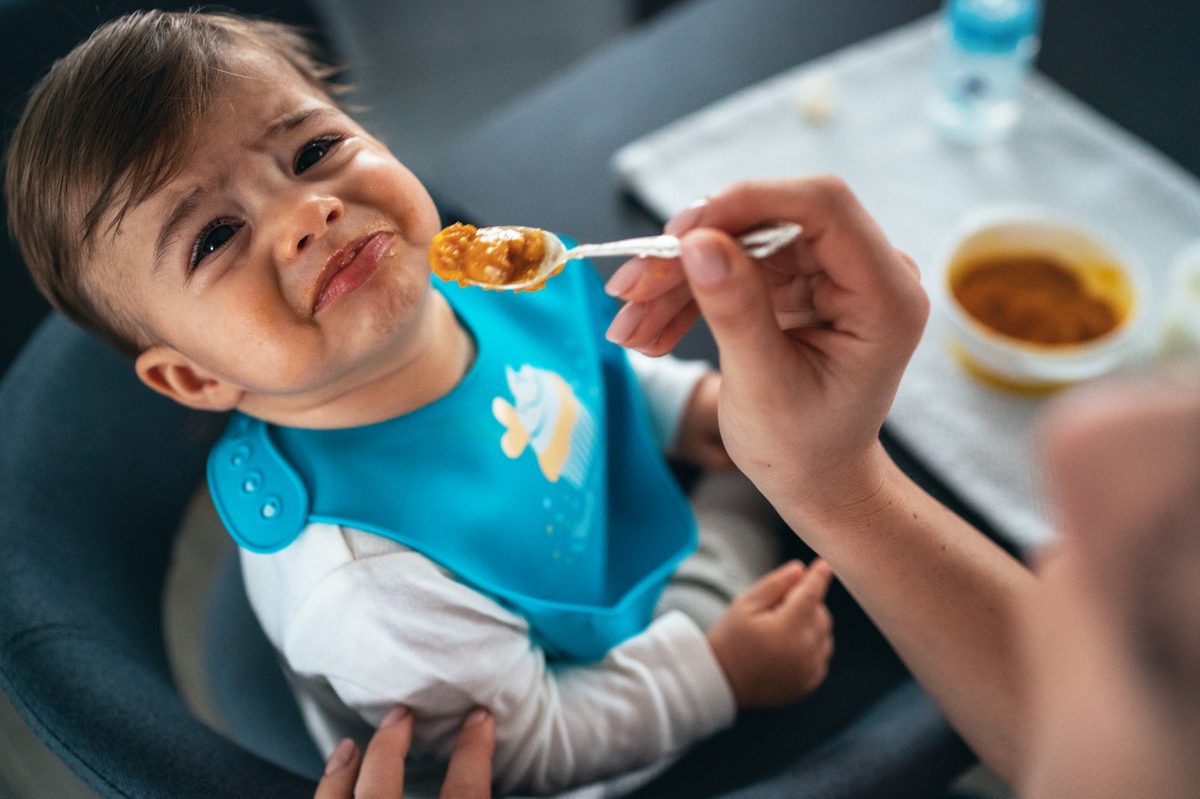Raising a kid is 18 years of prompt engineering: Musk
Raising a kid is 18 years of prompt engineering, said Tesla and SpaceX CEO Elon Musk on Wednesday.
According to Picky eating in children: causes and consequences, published in Nutrition Society Irish Section Meeting 2018, “Picky eating is a common behaviour in early childhood. There is no universally accepted definition of picky eating, nor is there agreement on the best tool to identify it.”

Mother feeding the cry baby son with a spoon (Pic: iStock)
One of the most common problems faced by parents of young children is that the kids are “picky eaters.” A major part of the effort of a young parent goes into convincing his/her young ones to have a proper meal. At times, it becomes very frustrating.
While being a picky eater is natural for most children, there is no established reason as to why they have such a freaky eating habit. According to Picky eating in children: causes and consequences, published in Nutrition Society Irish Section Meeting 2018, “Picky eating is a common behaviour in early childhood. There is no universally accepted definition of picky eating, nor is there agreement on the best tool to identify it.”
As a parent, you must understand the below point:
Advertisement
Understand your child’s preference
Every child has a preference when it comes to food or its ingredients. Some children like a particular ingredient while others like another. Some children like eating uncooked white bread, while others like to gorge on a specific lentil or a boiled rice and curd. It is completely normal for children to prefer a particular food item. Parents are supposed to understand their preference. Make sure you include their favourite food item in one meal every day. Children like to eat most of their preferred food items. This way you can rest assured they are adequate and are actually “filling up”.
Track their eating regime
It is common among children to like some snacks and drinks. Nowadays, children are exposed to social media videos and in most of the videos, children promote various snack brands, candies and drinks. It is natural that kids would like to eat their favourite snacks.
According to The ‘picky eater’: The toddler or preschooler who does not eat, published in Paediatrics & Child Health, “Reinforce that snacks work best mid-way between meals and should not be offered if the timing or quantity of snacking will interfere with the child’s appetite for the next meal.”
We just need to keep a tab on their routine and make sure they are not ‘snacking’ closer to their meal time. If the child munches on chips or popcorn an hour before dinner time, he/she is bound to not feel hungry around the time of the meal. It is very important to allocate a particular time of the day for having snacks. You can take the initiative and give them their favorite snacks at the time decided. You would notice that your child would not deny food around mealtime.
Communicate the ingredients clearly
Many children like a particular vegetable or other ingredient in its raw shape and form. Make sure that you explain everything about the ingredient to your child. For example, if your child loves raw tomatoes, make sure that you cut them in front of them, and explain how the cut tomatoes would be used in cooking food. When you serve the cooked dish, they would know what it contains and it would create an interest in them and they would be eager to eat it.
Be consistent
It is also very important to be consistent with ingredients that are used to cook food. The quantity of food also makes a lot of difference. Children are very particular about the taste of their food and any variation in the taste and ingredient can discourage them from having their meal. Grown-ups have a different preference in taste as compared to children. When we understand their taste preference, we need to maintain the same taste in their meal. We would need to put in less effort to convince them to have their meal.
Let them in the kitchen
All thanks to TV and YouTube channels, kids watch a lot of kids’ cooking programmes. This makes them interested in cooking by watching something being cooked. It is a great idea to let children inside the kitchen. The more they watch food being cooked, the more they are interested in eating the cooked food.
According to Picky Eating in Children: A Scoping Review to Examine Its Intrinsic and Extrinsic Features and How They Relate to Identification, “Involving the child in the preparation of food was found to reduce the likelihood of picky eating, as was the child having choice over food and having repeated exposure to healthy foods.”
Break two eggs and make an omelet or fry their favorite veggies while they watch the process. They would feel more “connected” with the cooked food.
Some other tips to follow:
Advertisement